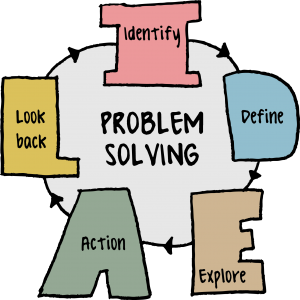Where does creativity start? With an assignment? With a lesson? What about the idea? I think that if we expect our students to be creative and to teach them how to be creative, we must first teach them how to think. What does it even mean to teach someone how to think? Teaching Children to Think by Robert Fisher outlines the ways in which teaching children how to think is one of the most beneficial skills anyone can learn. In order to funnel our thoughts and pin point our ideas, we need to know the process. There are many types of thinking, such as creative thinking, critical thinking, problem solving. In school we are taught many of the basic skills, math, english, social studies and the like, we are focus on how to achieve these skills rather than on the potential that can be achieved. This book presents ideas regarding how to get people to be more effective thinkers which might even lead to increased intelligence.

What does thinking have to do with creativity? For me, it all begins with a thought… but what is it? The best way for me to describe what it might be is to say that it is potential. In order to teach our kids how to find their creativity and harness it in their learning, we need to teach them how to think of those creative, innovative ideas and how to pursue them. This takes all types of thought, creative though, critical thought and of course, problem solving (because what ever works out the first time?).
Reference:
Fisher, R. (1990). Teaching children to think (2nd ed.). Oxford: Basil Blackwell. Retrieved February 4, 2016, from https://books.google.ca/books?hl=en&lr=&id=0az0JYM_pHMC&oi=fnd&pg=PR7&dq=how to get kids to think&ots=UlpALjqkJu&sig=pYEKkKGxw_DRAHYOjD_K3d2C5XA#v=onepage&q=DOI&f=false.

 Juan was in a difficult situation and used problem solving skills to solve his problem. Creativity
Juan was in a difficult situation and used problem solving skills to solve his problem. Creativity